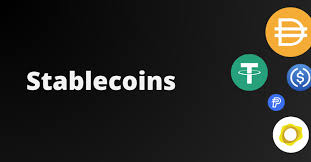The Role of Stablecoins in a Volatile Crypto Market
Cryptocurrency is known for its wild price swings. One day the market surges, the next it plummets. For investors, traders, and businesses operating in this unpredictable space, stablecoins have become an essential tool for managing risk and navigating volatility. Designed to hold a consistent value, these digital assets bridge the gap between traditional finance and decentralized innovation. As we move further into 2025, understanding the importance of stablecoins is more relevant than ever.
Stablecoins are digital currencies that aim to maintain a stable price by being pegged to an underlying asset, most commonly the US dollar. This makes them a reliable store of value and medium of exchange in the otherwise fluctuating world of cryptocurrencies. Whether you’re cashing out of a position, waiting for a better buying opportunity, or conducting cross-border transactions, stable crypto assets offer a secure place to park your funds without converting back to fiat.
There are different types of stablecoins, each with its own structure and risk profile. The two most well-known are USDT (Tether) and USDC (USD Coin). Both are pegged 1:1 to the US dollar but differ in how they maintain their value and in the level of transparency they offer. The debate over USDC vs USDT continues to spark conversation in the crypto community, with users choosing based on trust, compliance, and use case.
USDT, issued by Tether, is the oldest and most widely used stablecoin. It boasts massive trading volume and availability on nearly every exchange. However, it has faced criticism for its lack of transparency regarding its reserves, despite recent improvements in audits and disclosures. Still, its dominance in liquidity and pairs makes it the go-to stablecoin for many traders.
On the other hand, USDC, developed by Circle and Coinbase, is known for its regulatory compliance and regular audits. It has become the preferred choice for institutions and users looking for a more transparent and trusted stablecoin. In recent years, USDC has seen rapid adoption across DeFi platforms, wallets, and payment solutions.
So why are stablecoins so critical in today’s volatile crypto market? First, they provide a safe haven during sharp downturns. When prices fall, investors can quickly move their assets into stablecoins to protect value without needing to exit the crypto ecosystem entirely. This liquidity option makes it easier to stay in the market while avoiding the rollercoaster ride of major tokens like Bitcoin or Ethereum.
Second, stablecoins are key to decentralized finance. Many DeFi protocols use stablecoins for lending, borrowing, and yield farming. Because their value doesn’t fluctuate wildly, stablecoins make for predictable collateral and interest payments. This stability underpins the entire DeFi infrastructure, enabling complex financial services without traditional banks.
Stablecoins also support global payments. In regions with unstable local currencies, stablecoins provide access to a more secure store of value. Cross-border transfers become faster, cheaper, and more accessible, especially for people without access to traditional banking.
Of course, stablecoins are not without challenges. Regulatory scrutiny is increasing, with governments paying close attention to how stablecoins are backed and who controls them. There are also concerns about centralization, especially when a single entity holds the power to freeze accounts or manage reserves. Despite these issues, the benefits they bring to the crypto space continue to outweigh the risks.
In conclusion, stablecoins play a foundational role in the crypto economy. They offer a stable bridge between volatile assets and real-world use cases, enabling smoother trading, safer storage, and faster transactions. As the market matures, the demand for reliable, transparent, and secure stablecoins will only grow. Whether you’re an investor seeking safety or a developer building the next DeFi platform, stablecoins are more than just a tool — they’re a necessity in modern crypto finance.







